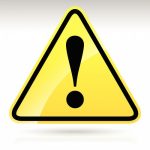Understanding the Plain Language Labelling Regulations for Non-Prescription Drugs: A Comprehensive Guide
By: Madelyn Martinez, REGULATORY SPECIALIST, email
Overview of the Regulations
On June 13, 2017, an amendment to the Food and Drug Regulations referred to as the Plain Language Labelling (PLL) Regulations for non-prescription (Over the Counter (OTC)) drug products came into force. The purpose of these PLL regulations is to improve the clarity and readability of labels for non-prescription drugs in Canada. By standardizing label requirements, Health Canada hopes to improve the safe use of these drugs and decrease the misuse by consumers. These regulations tackle labelling and packaging requirements as well as acceptability of brand names for drugs for human use. The products affected include prescription and non-prescription pharmaceutical drugs, biologic drugs, radiopharmaceuticals and disinfectants, but certain requirements only apply to some products. Products excluded from these regulations include medical devices, veterinary drugs, natural health products and disinfectant drugs for use only on hard non-porous surfaces. All submissions received on or after the coming into force date are subject to these new requirements and they are not to be applied retroactively.
Key Requirements for Non Prescription Drugs
General Plain Language Requirement
Information is to be formatted or presented in a manner that is easy to read and comprehend. As per these PLL regulations, sponsors must submit a final mock-up label that shows how the product will be seen on the market and no Drug Identification Number (DIN) and/or a Notice of Compliance (NOC) will be issued unless this mock-up is approved.
Tools available to support manufacturers, packagers, and distributors of non-prescription drugs in label development include:
- Labelling Requirements for Non-prescription Drugs (Guidance document)
- Health Canada recommends sponsors adhere to this guidance document as best as possible.
- Good Label and Package Practices Guide for Non-prescription Drugs and Natural Health Products (GLPPG)
- Offers evidence-backed best practices for label and package design development.
Brand Name Assessment
A products brand name is one of the first pieces of information a consumer will encounter. The brand name assessment requirement ensures that sponsors provide Health Canada with sufficient evidence to show that a drug cannot be confused with another with a similar name. The aim of this assessment is to avoid confusion and erroneous use of a product which can potentially lead to serious harm because a brand name is written or spoken in a manner that resembles another product. To learn more about what to expect from a brand name assessment, please consult Appendix 1 and 2 of Guidance Document: Questions and Answers: Plain Language Labelling Regulations for Non-prescription Drugs.
Contact Information
All drugs intended for human use must provide contact information on every label to allow Canadians direct access in case of potential issues experienced with a product (e.g. adverse reactions), or in case of questions or concerns about the product.
Requirement overview:
- Must appear on both outer and inner labels (in case packaging is damaged or discarded)
- Must appear in both official languages
- At minimum, one method of contacting the responsible person in Canada must be provided (e.g. toll-free number, email address, website).
- Note: contact person must be in Canada, however their name does not need to be disclosed on the label.
- Where a Canadian Drug Facts Table (CDFT) is applicable, a “Questions?” section can list this information.
Canadian Drug Facts Table (CDFT)
The purpose of the CDFT is to organize the label contents in a standardized format for ease of readability and interpretation of the product information.
Requirement overview:
- Must be visible on the outer label of a retail package (outer label) or on the immediate container label (inner label), in the absence of an outer label.
- Information should be written for a grade 6 to grade 8 reading level, avoiding technical language; short sentences and bulleted information is encouraged.
- Order of information must be as outlined in Table 1 of the label guidance document.
- Information to be included in the table: active ingredients, purpose, directions, warnings, inactive ingredients, and other information such as storage instructions and contact information.Note: Flexibilities are available where needed. Consult the Guidance Document: Labelling Requirements for Non-prescription Drugs for more details.
Mock-up label
Mock-up labels and packaging is a key factor in the PLL regulations because it is a sure way for Health Canada to know if the information presented on product labels is easy to read and to comprehend by both consumers and health care professionals.
The benefit of having mock-up labels reviewed is there is no room for misinterpretation of the requirements by sponsors because Health Canada must review and approve them. The probability of label and packaging errors decreases.
Implementation and Enforcement
Implementation Dates and Transition Period
- Effective date: June 13, 2017.
- Products affected:
- All new Drug Identification Number (DIN) applications, Supplemental or Abbreviated New Drug Submissions submitted on or after this date must comply with new PLL requirements including the CDFT.
- New or currently marketed products that require a DIN issuance or a Notice of Compliance (NOC) because of substantial label changes.
- Products affected:
- Compliance date: June 30, 2021
- All OTC drug products must be in full compliance with the PLL Regulations at the retail level, including a CDFT on the outer label if applicable.
Conclusion
The Plain Language Labelling Regulations (PLL) aim to improve the clarity and readability of labels for non-prescription drugs in Canada. By adhering to these regulations, sponsors help encourage the safe use of non-prescription drugs and help reduce the problems and dangers that may arise from misunderstanding a products’ purpose.
For better understanding of these and other label requirements, Health Canada encourages product sponsors to consult the Guidance Documents: Labelling Requirements for Non-prescription Drugs and Good Label and Package Practices Guide for Non-prescription Drugs and Natural Health Products (GLPPG).
Regulatory Support
Struggling with non-prescription drug labelling and regulatory requirements? Let our experts at Dell Tech guide you through the process! We offer comprehensive regulatory support to streamline compliance with Canadian regulations, saving you both time and money. Connect with us today to ensure your products meet all the necessary standards.
To learn more about services, visit our service page.

Dell Tech has provided professional, confidential consulting services to the specialty chemical
industry in Canada, the USA, Europe, and Asia for the last 40 years.
Talk to our team about how we can benefit your business today!





